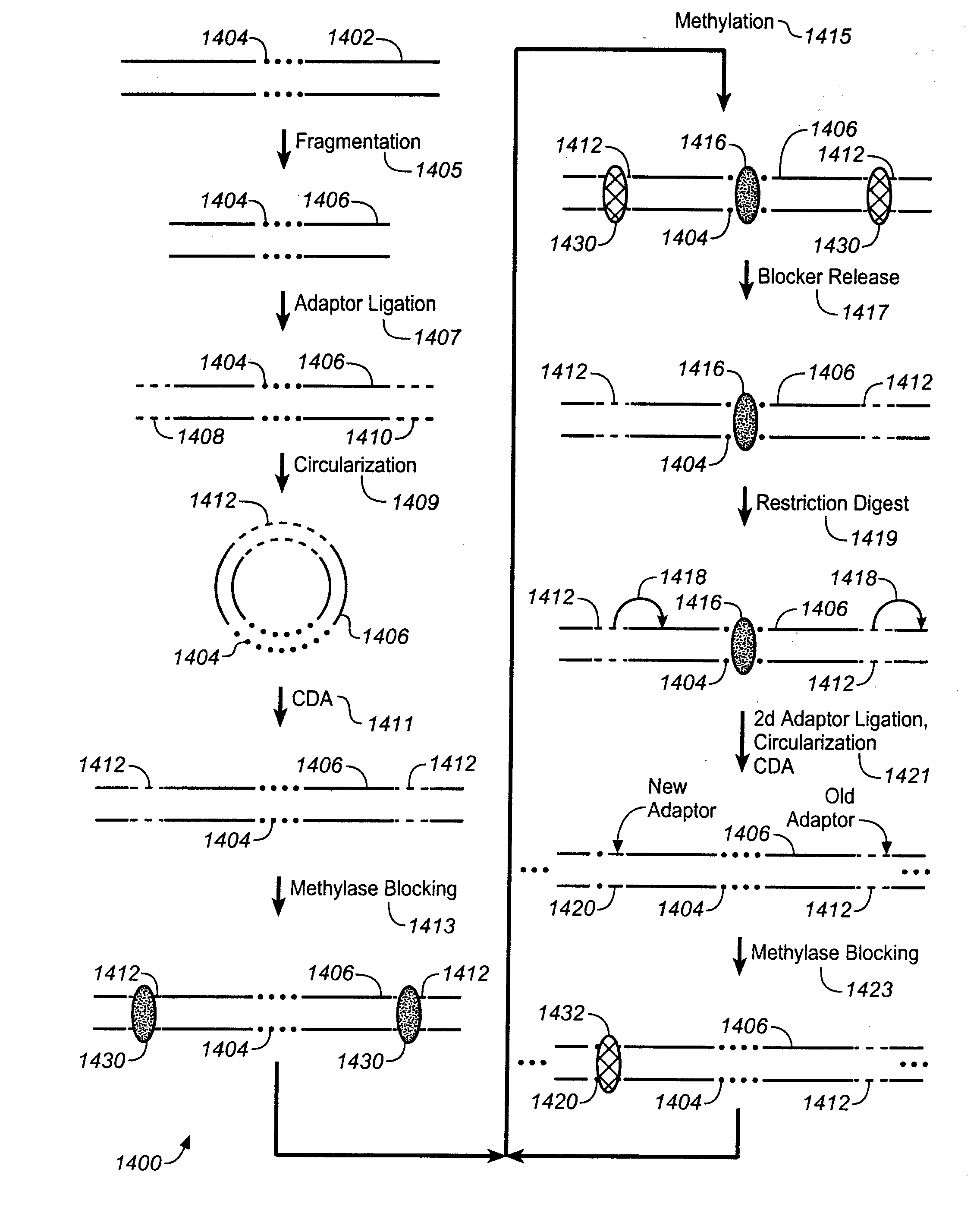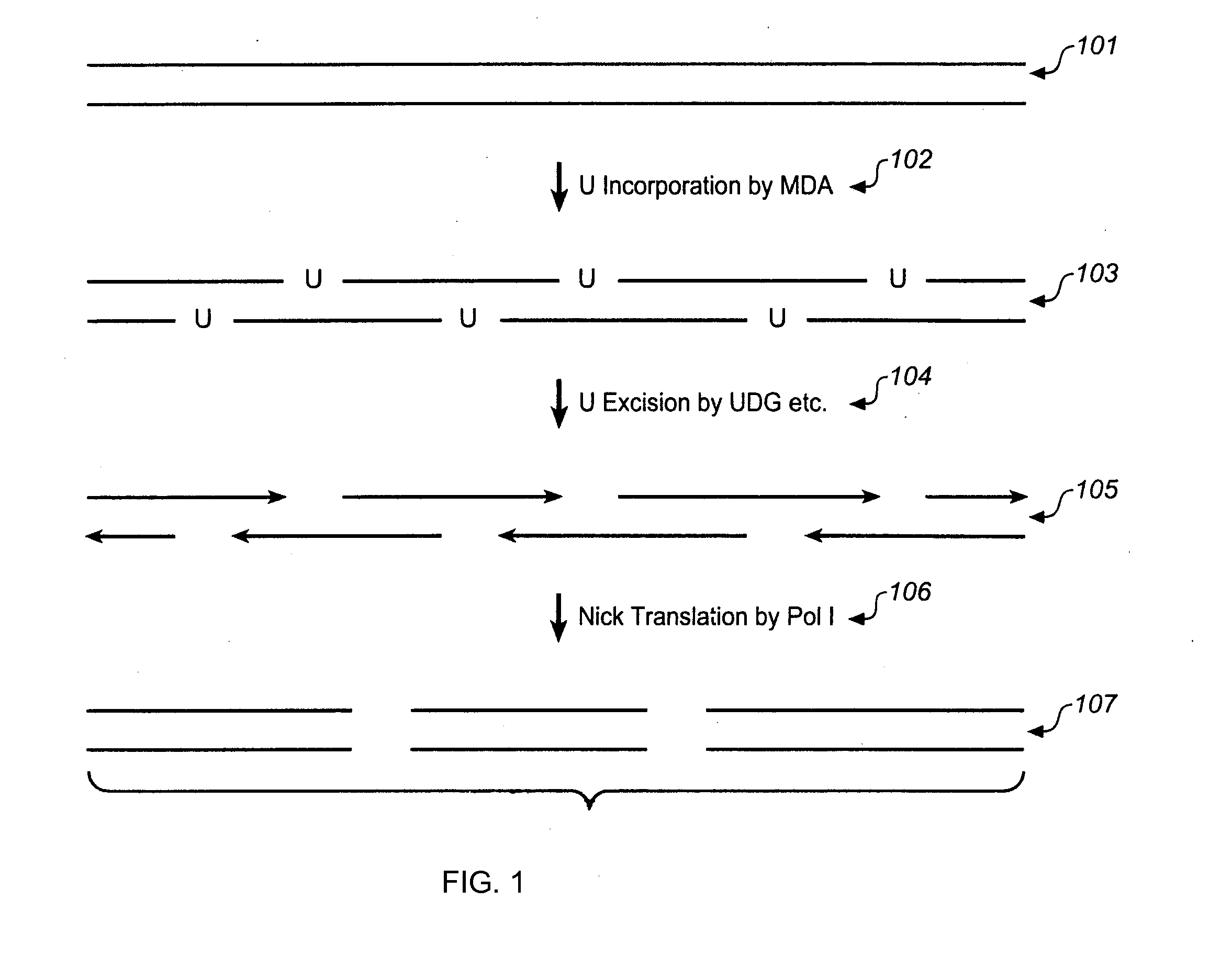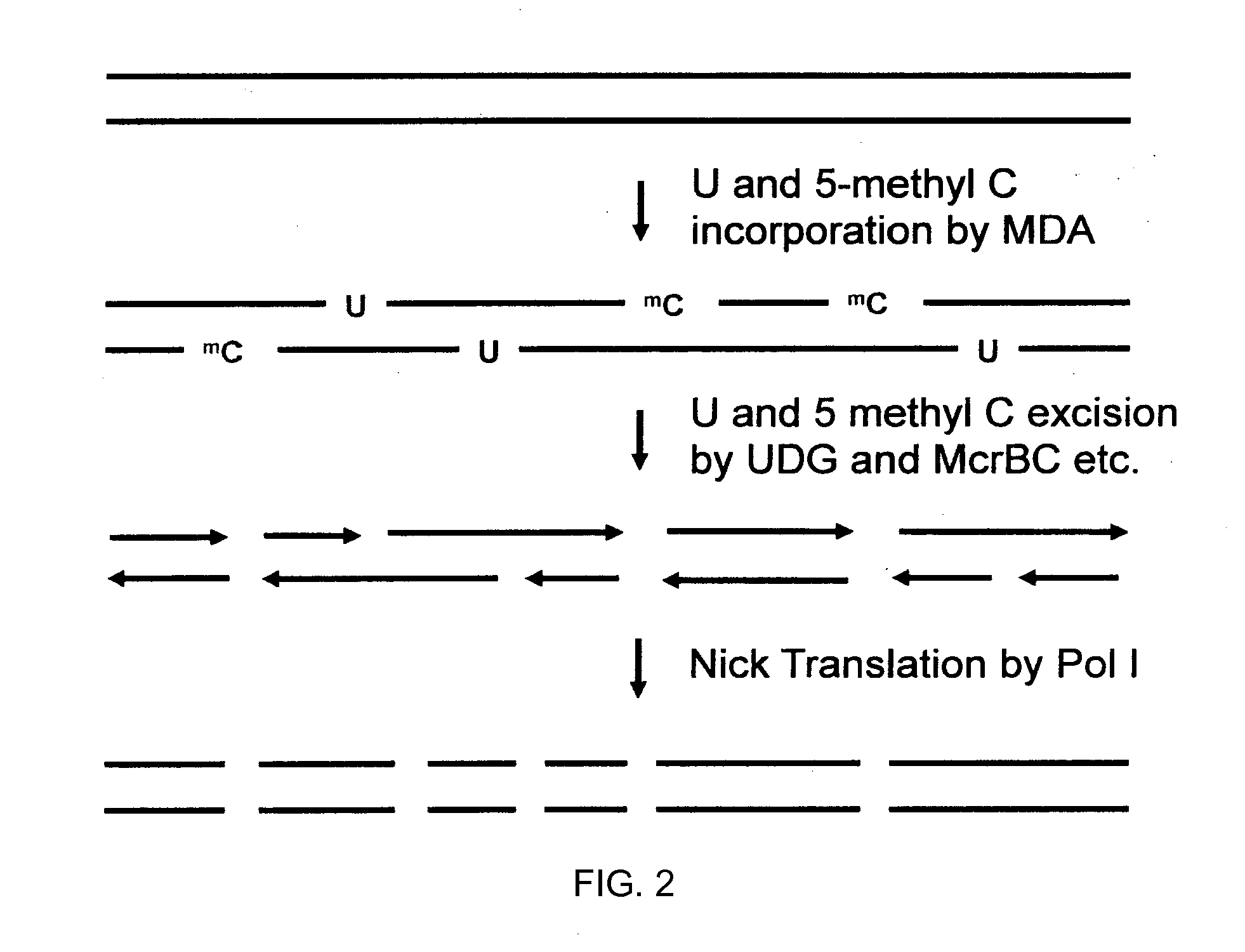Methods and compositions for long fragment read sequencing
a technology of fragment read and composition, applied in the direction of sequential/paralleled process reactions, microorganism testing/measurement, biological apparatus and processes, etc., can solve the problems of unsuitable single-molecule sequencing methods, significant limits on overall sequencing efficiency, and limited conventional methods of sequencing, so as to achieve less gc bias, less coverage bias, and less gc bias
- Summary
- Abstract
- Description
- Claims
- Application Information
AI Technical Summary
Benefits of technology
Problems solved by technology
Method used
Image
Examples
example 1
Overview of LFR Technology
[0460]As illustrated in FIG. 30(A), genomic DNA is released from 1-100 cells and maintained as long fragments from 100 kb to 1 mb in size. DNA is replicated if a few cells are used. Blue represents the maternal and red the paternal fragment of a selected loci. In FIG. 30 (B), the long genomic DNA is split into 1000 to 100,000 aliquots (e.g., a 1536- or 6144-well plate or >10,000 nanoliter drops such as in RainDance or Advanced Liquid Logic systems) containing 1% or as low as 0.01% of a haploid genome (1-1,000 fragments per aliquot). In FIG. 30 (C), DNA is amplified (not necessary for some platforms) by phi29 polymerase (resulting DNA can be shorter than original), enzymatically fragmented to 100-10,000 by (standard is 500 bp), and uniquely bar-coded in each aliquot via combinatorial DNA adapter ligation with unique 6- to 12-mer sequence. In FIG. 30 (D), aliquots are pooled into a single reaction. In FIG. 30 (E) barcoded DNA is incorporated into standard lib...
example 2
Miniaturization of LFR
[0461]As shown in FIG. 28(A), 96-384 uniquely barcoded half adapters from Set A and Set B are combined in a pair wise fashion into about 10K-150K distinct individual combinatorial adapter oil-water droplets. In FIG. 28(B), up to 10 billion combinatorial adapter droplets in 10 ml are formed (in a few days) and stored. This amount is sufficient to process over 1000 human samples. In FIG. 28(C), combinatorial adapter droplets from (B) are fed into a microfluidic device and merged one-to-one with drops of amplified fragmented DNA generated from sub-genome aliquots of >100 kb fragments, FIG. 28(D), fragmented DNA in 10,000 or more emulsion droplets is ligated to unique combinatorial adapters. In FIG. 28(E) is shown a magnified view of a combinatorial adapter. Yellow represents 4-6 bps components of barcode sequence; blue and red represent Set A and Set B common adapter sequence, respectively. Set A and B adapters have 2-4 bps of complementary sequence for improved d...
example 3
Using LFR Data to Define Haplotypes
[0462]An example of a consensuses chromosomal sequence with 4 heterozygote sites at variable distances of 3 to 35 kb is depicted in FIG. 29. Starting from the left, the percent of shared aliquots (PSA) is calculated for each pair of neighboring alleles. The numbers for 4 possible pairs are written in the following order: top-top, top-bottom, bottom-top, and bottom-bottom (e.g., numbers 7, 87, 83, and 0) for the 7 kb segment correspond to A-C, A-T, G-C and G-T pairs, respectively. If 20 cells are used an allele can be found in 20 or less aliquots. For A-C and A-T pairs only A aliquots lacking G are used. For G-C and G-T pairs only G aliquots lacking A are used. For A-T pair, if A without G is present in 15 aliquots, T is present in 17 aliquots and A and T are present together in 13 aliquots, the PSA is 13 / 15=87%.
PUM
| Property | Measurement | Unit |
|---|---|---|
| volume | aaaaa | aaaaa |
| volume | aaaaa | aaaaa |
| volume | aaaaa | aaaaa |
Abstract
Description
Claims
Application Information
 Login to View More
Login to View More - R&D
- Intellectual Property
- Life Sciences
- Materials
- Tech Scout
- Unparalleled Data Quality
- Higher Quality Content
- 60% Fewer Hallucinations
Browse by: Latest US Patents, China's latest patents, Technical Efficacy Thesaurus, Application Domain, Technology Topic, Popular Technical Reports.
© 2025 PatSnap. All rights reserved.Legal|Privacy policy|Modern Slavery Act Transparency Statement|Sitemap|About US| Contact US: help@patsnap.com



